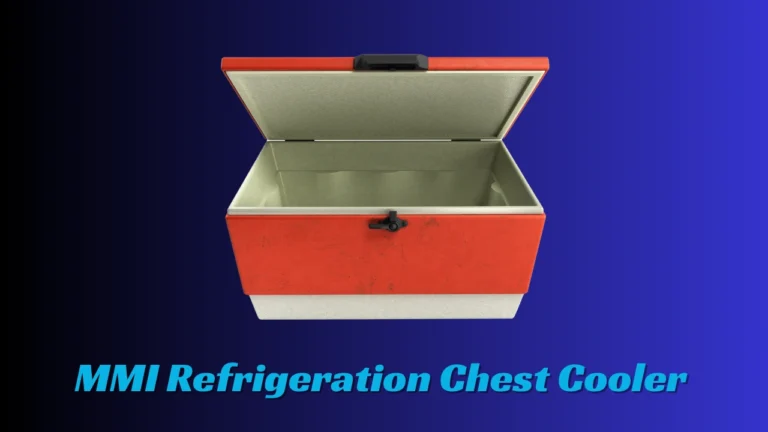Immediate 1.0 Avage: Streamlining Efficiency and Reducing Costs
In the digital and technical world, terms often evolve, carrying new meanings or applications. One such intriguing term is immediate 1.0 avage. While not a widely recognized phrase, it has emerged in specific contexts, often associated with technology, data analytics, or business processes. This article explores what “immediate 1.0 avage” signifies, its implications, and its potential applications.
What is Immediate 1.0 Avage?
The phrase immediate 1.0 avage combines the concept of “immediacy,” the significance of a baseline measurement, and the term “avage,” which could relate to averages or derived data points. When broken down, it suggests a process or system achieving a baseline result or status of 1.0 as an immediate outcome. This concept could apply in contexts such as performance metrics, software versions, or quick-result analytics.
To better understand, imagine a scenario where a digital system must produce an immediate output score. This immediate 1.0 could indicate a standard or benchmark score generated instantly, reflecting system efficiency or initial calibration.
Also Read: Clix Height and Weight Fortnite Pro’s Impressive Physique
Practical Applications of Immediate 1.0 Avage
In practice, it is relevant in multiple domains, particularly those relying on real-time data processing or performance benchmarking. Let’s explore some areas where this concept might be applied:
- Technology and Software:
In software development, immediate 1.0 may represent the baseline functionality of a version 1.0 system. Developers aim to achieve a consistent and immediate performance output to ensure reliability during the first phase of deployment. - Data Analytics:
For data scientists, immediate 1.0 could involve statistical operations where an average (avage) score of 1.0 is immediately computed as a baseline during data analysis. This ensures that systems begin their calculations from a predefined standard. - Business Metrics:
Businesses often rely on instant feedback to measure performance. The term could apply to Key Performance Indicators (KPIs), where a “1.0 avage” serves as an initial benchmark for decision-making.
Benefits of Immediate 1.0 Avage
Enhanced Efficiency and Productivity
One of the primary benefits of immediate 1.0 avage is its ability to enhance efficiency and productivity. Systems or processes optimized for immediate performance eliminate delays that might occur during initial implementation or operation. Whether in software, manufacturing, or service delivery, achieving immediate 1.0 ensures that tasks are completed faster without compromising on quality. This level of efficiency translates into streamlined workflows and allows businesses to achieve their goals more effectively.
Cost-Effectiveness
Achieving immediate 1.0 significantly reduces costs associated with repeated iterations, fixes, or delays. When a product, system, or process performs optimally from the start, there is less need for post-deployment corrections or improvements. This means businesses save both time and financial resources that would otherwise be spent on troubleshooting or upgrading. Over time, this cost-efficiency leads to better resource allocation and higher profit margins.
Improved User Experience
Products and systems that achieve immediate 1.0 provide a seamless and reliable experience for end users. For example, software that performs as expected upon its first release instills confidence in its users and minimizes frustration. Whether it’s a mobile application, a navigation system, or a service platform, offering immediate and consistent results ensures customer satisfaction and fosters loyalty.
Competitive Advantage
In highly competitive industries, speed and reliability are key factors in gaining a market edge. Businesses that achieve immediate 1.0 avage are better positioned to meet consumer demands quickly and effectively. By delivering optimal performance from the outset, companies can differentiate themselves from competitors, attract more customers, and strengthen their market presence. This competitive advantage is crucial in sectors where timing and precision are critical.
Reduced Downtime
Systems optimized for immediate 1.0 experience less downtime compared to those that require continuous adjustments or recalibrations. This reliability is particularly important in industries such as manufacturing, healthcare, or logistics, where even minor interruptions can lead to significant losses. By ensuring smooth functionality from the start, businesses can maintain uninterrupted operations and minimize potential disruptions.
Environmental Impact
Another notable benefit of immediate 1.0 avage is its positive impact on the environment. Processes that function optimally from the beginning often require fewer resources, reducing waste and energy consumption. For example, manufacturing systems that achieve immediate efficiency produce fewer defective products, leading to less material wastage. This environmentally friendly approach aligns with sustainability goals and enhances a company’s reputation as a responsible organization.
Consistency and Reliability
Achieving immediate 1.0 ensures that systems operate with consistency and reliability. When a product or service performs as intended from the outset, it builds trust among users and stakeholders. This reliability is especially critical in sectors like healthcare, finance, and technology, where precision and dependability are non-negotiable. Consistent performance also simplifies troubleshooting, as fewer variables are likely to cause issues.
Faster Time-to-Market
For businesses, the ability to deliver products and services quickly can be a game-changer. With immediate 1.0, systems and solutions are ready for deployment without requiring extensive post-launch modifications. This speeds up the time-to-market, allowing companies to capitalize on emerging opportunities and meet customer needs ahead of competitors. Faster deployment also means quicker revenue generation, which is vital for business growth.
Long-Term Scalability
Although the concept of immediate 1.0 focuses on initial performance, it also sets the stage for long-term scalability. Systems that are optimized from the beginning are easier to upgrade and expand as demands increase. This forward-thinking approach reduces the complexities of future modifications, making it easier for organizations to adapt to evolving needs without starting from scratch.
How Immediate 1.0 Avage is Achieved
Achieving immediate 1.0 depends on streamlined processes and efficient systems. For instance, in software systems, developers optimize algorithms to produce immediate results. In analytics, pre-programmed metrics ensure consistent baselines without delay. Below is a simplified table summarizing methods to achieve immediate 1.0 avage:
| Domain | Methodology | Outcome |
|---|---|---|
| Software | Pre-calibrated benchmarks | Immediate version output |
| Data Analytics | Automated baseline computations | Instant averages |
| Business Metrics | Predefined KPI measurement systems | Immediate feedback |
The speed and accuracy of immediate 1.0 avage depend on robust infrastructure and a clear understanding of baseline expectations. Whether it’s software performance or analytical computations, achieving this immediacy is a mark of efficiency.
Why is Immediate 1.0 Avage Important?

The importance of immediate 1.0 lies in its ability to provide quick, actionable insights. In a world where decisions are made in seconds, this immediacy can be critical. Let’s examine the benefits:
- Efficiency: Systems delivering immediate results save time and resources, reducing downtime and operational lags.
- Reliability: A predefined baseline, such as 1.0, ensures consistency, enhancing trust in systems and data outputs.
- Decision-Making: For businesses, having instant metrics allows leaders to act quickly, adapting strategies to real-time feedback.
Imagine a scenario in digital marketing. A campaign monitoring tool delivering “immediate 1.0 avage” can help marketers gauge baseline performance instantly. If results deviate, they can recalibrate campaigns without delay.
Challenges in Implementing Immediate 1.0 Avage
Despite its benefits, implementing immediate 1.0 presents challenges. Systems must be designed to handle large-scale data in real time. Additionally, defining a universally accepted baseline of “1.0” can vary across industries, leading to inconsistencies. Below are some common challenges:
- Data Overload: Real-time processing can overwhelm systems if data inputs are too large.
- Baseline Ambiguity: The definition of “1.0” might differ across domains, complicating implementation.
- Cost Implications: Building systems capable of achieving immediacy can be expensive.
Addressing these challenges requires technological advancements and clear communication between stakeholders to define expectations and outcomes.
Real-World Example of Immediate 1.0 Avage
One real-world example is in cloud-based analytics platforms. These platforms often compute baseline performance metrics as soon as data is ingested. For instance, an e-commerce analytics tool might use “immediate 1.0 avage” to evaluate customer engagement within seconds of a campaign launch. This baseline helps teams understand whether the campaign is meeting expectations right from the start.
The Future of Immediate 1.0 Avage
As technology evolves, so will the applications and understanding of “immediate 1.0 avage.” The future promises even faster systems capable of delivering insights within milliseconds. Machine learning and artificial intelligence (AI) could further refine this concept, making it more accessible and accurate across various industries.
Moreover, as industries adopt this approach, “immediate 1.0 avage” could become a standard practice, especially in sectors like healthcare, finance, and logistics, where real-time decision-making is crucial.
Also Read: J.W. Woodward Obituaries Tribute to Cherished Memories
Conclusion
In conclusion, “immediate 1.0 avage” is a term that embodies efficiency and reliability. Whether applied in software, analytics, or business operations, its value lies in delivering instant, consistent outputs. As industries continue to innovate, this concept could redefine how we approach real-time systems and metrics.
By understanding and implementing “immediate 1.0 avage,” organizations can stay ahead, ensuring they are prepared for the demands of a fast-paced world. With its growing relevance, now is the time to explore how this principle can benefit your systems and processes.







